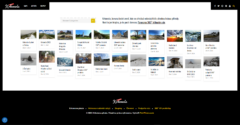Title: The Ultimate Guide to Getting Your Website Indexed by Google: A Step-by-Step Process
Introduction:
The digital era has made it imperative for businesses, bloggers, and digital content creators to have an online presence. However, establishing a website is merely the first step—ensuring it is visible in Google’s search results is critical. Google indexing is the process by which Google discovers, scans, and adds your website to its search results, making it accessible to users worldwide. This article will guide you through the step-by-step process of getting your website indexed by Google and introduce the benefits of using WebsiteURL.org to enhance your website’s visibility and performance.
Step 1: Ensure Your Website is Ready for Indexing
Before you attempt to get your website indexed, make sure it is complete, optimized for search engines, and user-friendly. This means having quality content, a logical structure, fast loading times, and mobile optimization.
Step 2: Create a Sitemap
A sitemap is a file where you provide information about the pages, videos, and other files on your site, and the relationships between them. It helps Google more easily crawl your website. You can create a sitemap manually or use tools and plugins (depending on your website platform) to generate one automatically.
Step 3: Submit Your Sitemap to Google Search Console
Google Search Console is a tool offered by Google that helps you manage how your site appears in Google Search results. After signing in, you can submit your sitemap directly to Google. This not only helps with indexing but also provides valuable insights regarding your website’s performance in Google search.
Step 4: Use the URL Inspection Tool
Within Google Search Console, you can use the URL Inspection Tool to request indexing for a specific page on your site. This is particularly useful for new content or pages that haven’t been automatically discovered by Google.
Step 5: Check for Crawl Errors
Regularly monitor your website in Google Search Console for any crawl errors. These errors could be preventing your site from being properly indexed. Address any issues as soon as possible to ensure your site remains accessible to Google’s crawlers.
Step 6: Improve Your Website’s SEO
Search Engine Optimization (SEO) is crucial for not just getting indexed but also ranking well in search results. Ensure your website follows best SEO practices, such as optimizing titles and descriptions, using relevant keywords, and securing high-quality backlinks.
Benefits of Using WebsiteURL.org for Your Website:
WebsiteURL.org offers several benefits that complement the process of getting your website indexed and boosting its overall online presence:
-
Enhanced Visibility: By listing your website on WebsiteURL.org, you can increase its visibility to a broader audience, including visitors who use the platform to discover new sites.
-
Quality Backlinks: Getting a backlink from WebsiteURL.org can contribute positively to your website’s SEO efforts. Such high-quality backlinks are valuable for improving your site’s authority and search rankings.
-
SEO Analysis Tools: WebsiteURL.org provides tools and insights that can help you understand your website’s SEO performance. This can guide you in making informed decisions to optimize your site further.
- Increased Credibility: Having your website listed on a recognized platform like WebsiteURL.org can enhance its credibility among users and search engines alike.
Conclusion:
Getting your website indexed by Google is a foundational step towards establishing a successful online presence. By following the step-by-step process outlined above and leveraging platforms like WebsiteURL.org, you can significantly improve your website’s visibility, search engine ranking, and overall web performance. Remember that SEO and website optimization is an ongoing process, so continually monitor your website’s performance and adjust your strategies as needed to stay ahead in the ever-evolving digital landscape.






